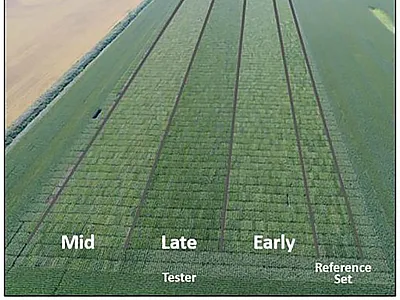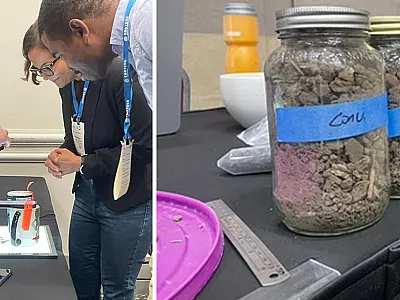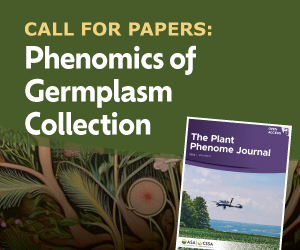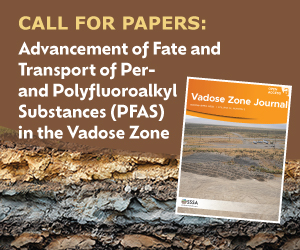Blending advanced AI and ‘old school’ tools to assess Fusarium head blight severity
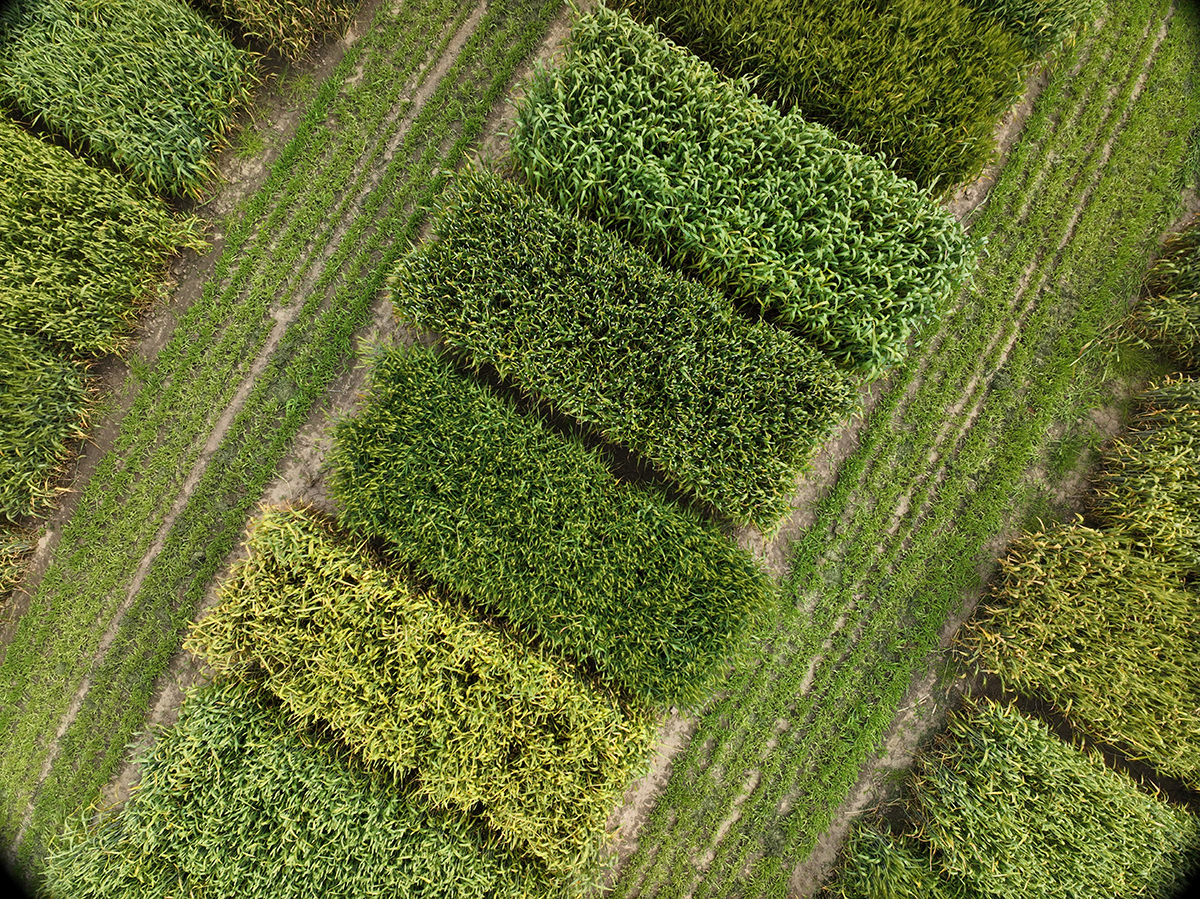
Plant breeders who study the fungal disease of wheat, Fusarium head blight (FHB), often screen wheat for resistance to FHB inside Fusarium “nurseries”: warm, humid greenhouses that foster growth of the FHB pathogen, Fusarium graminearum, and the spread of FHB. But the perfect conditions for FHB aren’t limited to breeding experiments these days; wet and warm weather is increasingly common in the outside world, too. As a result, FHB has grown over the past 20 years into one of the world’s most devastating diseases of wheat and other small grains, such as barley, oats, and triticale.
One reason FHB is so damaging is that it presents farmers with not one, but two, challenges. First, serious outbreaks of FHB can cause yields to plummet. But the bigger problem is the loss of grain quality—and, thus, market value—due to a mycotoxin produced by F. graminearum: deoxynivalenol (DON), also known as vomitoxin. Meanwhile, only a handful of moderately resistant wheat cultivars are available today, forcing farmers to rely on fungicides or other practices, such as crop rotation, to combat FHB.
In this issue, read about how plant breeders are fighting back against FHB through a combination of advanced technology and genetic studies and by searching for novel sources of FHB resistance.
Like virtually every industry today, agriculture is going big into artificial intelligence (AI), exploring ways AI can make farming more efficient and profitable. Yet, while AI has its benefits, University of Guelph professor and ASA member John Sulik thinks sometimes researchers apply “AI for AI’s sake” when simpler tactics would do.
Case in point is the approach he recently developed with his University of Guelph colleagues, including the project’s leader, master’s student Riley McConachie, and wheat breeder Helen Booker, a CSSA and ASA member. Reported on last year in The Plant Phenome Journal, their technology combines an advanced AI technique—deep learning—with a traditional tool—the spectral index—to quickly and reliably assess the severity of the fungal disease, Fusarium head blight (FHB), on wheat heads.
The team could have gone for an end-to-end deep-learning approach, Sulik says, which “would have been more impressive to deep-learning enthusiasts.” But that wasn’t the goal. “We just wanted to make a model we could use to improve wheat-breeding efforts and, for growers, to rate the severity of FHB in their fields.”
Going beyond visual assessments for more objective scoring
Today, plant breeders and farmers assess fungal diseases like stripe rust and FHB visually; in other words, they eyeball the plants and then estimate the percentage of infection. This is straightforward for stripe rust, where plants are either obviously infected or show no disease at all. But FHB in wheat is another story, Booker says.
In experiments in her breeding program, for example, assigning wheat plants to categories such as “moderately resistant” to FHB versus “moderately susceptible” is tricky, even for skilled researchers. Differences in disease levels are subtle. “People are very good at the extremes, but they can’t really tell the difference between, say, 60 and 70%,” Booker says. “So, that’s what this project is all about: to score the incidence and severity of FHB more objectively.”
The project began with a question from Booker’s team, Sulik says: Can we use a cell phone to estimate FHB severity? Sulik wasn’t sure—until he saw a post on LinkedIn shortly afterward. In it, a researcher named Etienne David announced the availability of a large database of wheat head images collected from all over the world. He also described how the data could be used to train deep-learning models to first locate wheat heads in images of wheat and then reduce the images to just the wheat head pixels.
The point of isolating these pixels is to analyze them further—for disease, for example. And for this last step, Sulik proposed using an “old school” tool, the spectral index. To rate FHB severity, the technique uses specific red and green bands of light, captured by a cell phone camera, to calculate the degree to which each wheat head pixel is bleached—signifying infection—or green—signifying health. Each pixel value is then compared to a threshold value for disease experimentally determined by McConachie. Pixels falling above the threshold are scored as healthy and those below it as infected. Finally, disease severity is estimated by counting the number of pixels above the threshold and then dividing by the total number of pixels in the wheat head image.
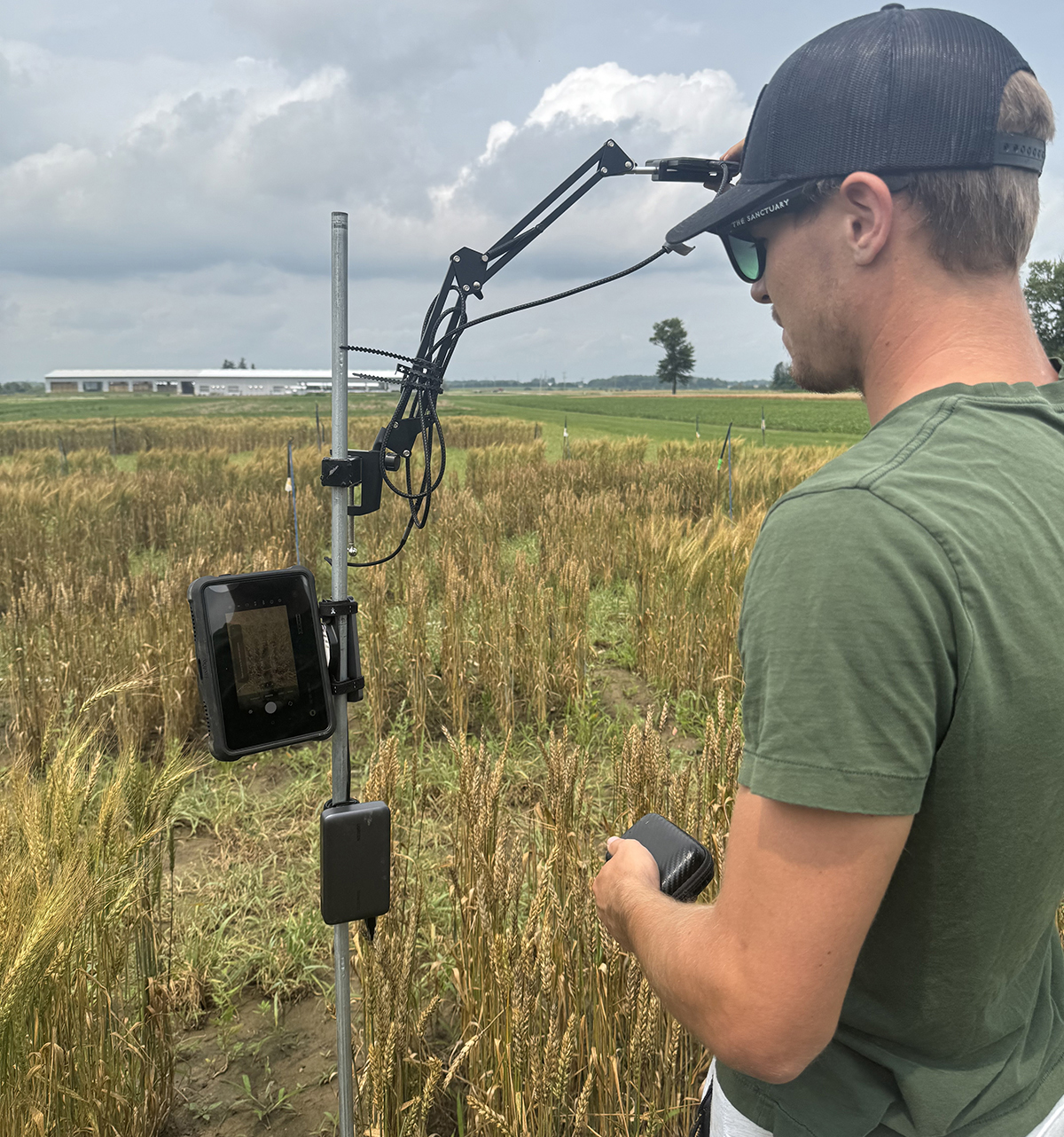
In summary, Sulik says, “David's approach got us to the heads. Then we used the index to see how green each pixel was and to see if there was a boundary, a pixel value, we could use repeatedly” to score disease. McConachie went on to show the method is in fact highly repeatable. He has now bundled everything into an app that plant breeders and farmers can eventually use in experiments and on farms.
Sometimes AI isn’t needed
Through the project, McConachie also became something of an expert in AI techniques. He learned how to work in the programming language, Python, for example, and with open-source deep-learning models, such as Meta’s “Segment Anything” and models available through Global Wheat Head Detection competitions, led by David. But the biggest lesson he learned is that sometimes AI isn’t needed.
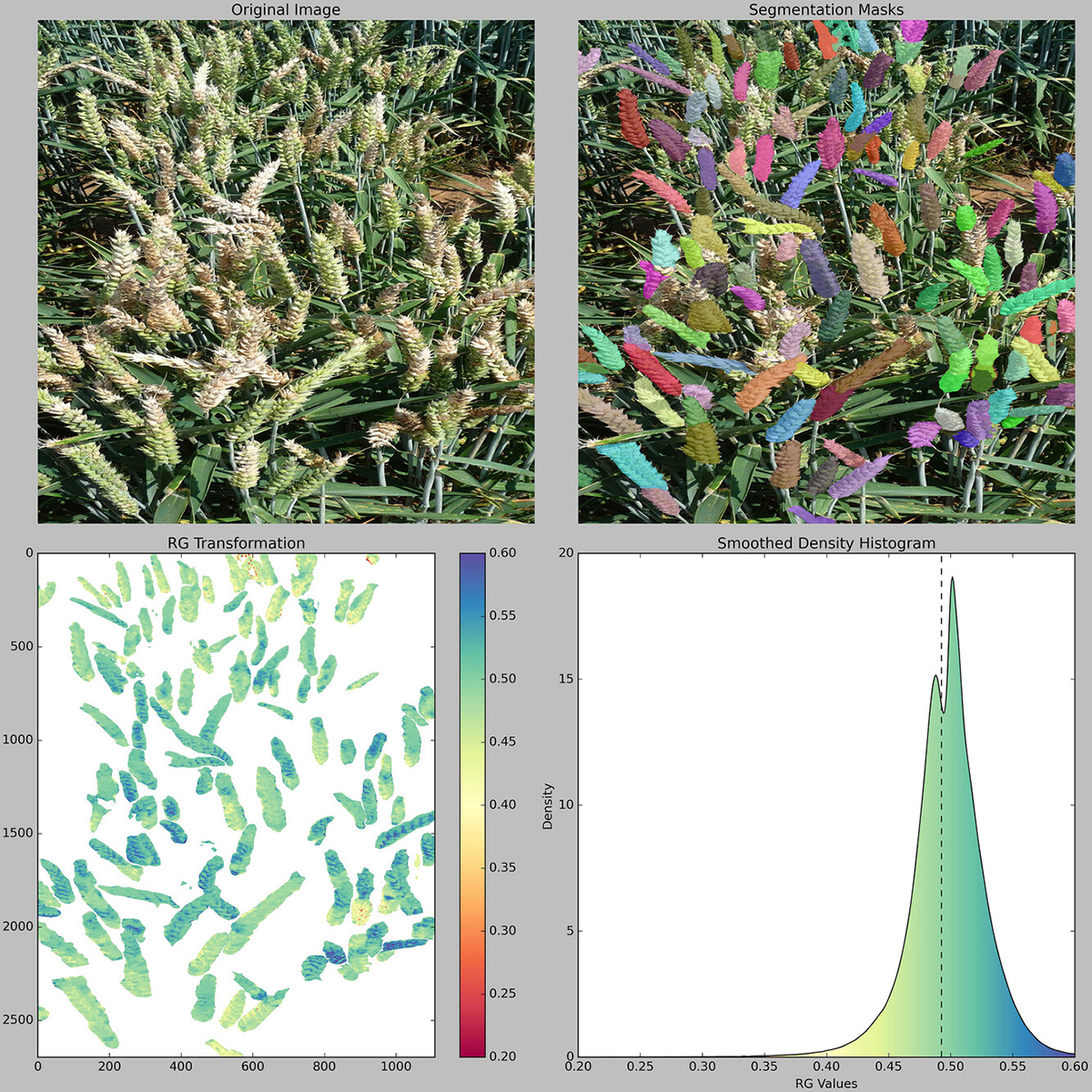
“Several past studies have tried to use complete deep-learning workflows to estimate FHB severity, but they didn’t transfer well to other datasets,” McConachie says. “By using deep learning as a stepping stone to get the data—in this case, images—to the point where other techniques could be used—spectral indices—we created a much more repeatable and transferable solution.”
Sulik agrees, adding that making the project “more AI” would have also made it more time-consuming and expensive. Instead, the team focused on “… getting a solution that's good enough at the lowest cost,” he says. “That's what agriculture is about.”
Dig deeper
McConachie, R., Belot, C., Serajazari, M., Booker, H., & Sulik, J. (2024). Estimating Fusarium head blight severity in winter wheat using deep learning and a spectral index. The Plant Phenome Journal, 7, e20103. https://doi.org/10.1002/ppj2.20103
Check out all the other Fusarium head blight articles in this issue of CSA News.
Text © . The authors. CC BY-NC-ND 4.0. Except where otherwise noted, images are subject to copyright. Any reuse without express permission from the copyright owner is prohibited.





